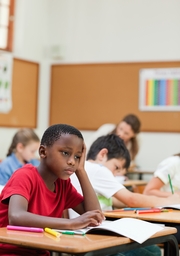The Good Side to Social Media
Do you ever hear about the positive sides of social media? Probably not very often. The negative press outweighs the positives. Scams, bullying, misinformation, privacy concerns. There are also the concerns when a person spends too much time on social media. It can take them away from interacting with friends and family in real life, leading to isolation.
While all of these issues are important to be aware of, there’s a positive side to social media that can’t be ignored. These upsides are the very reason why this worldwide phenomenon has grown experientially over the years, which has led to a growing number of social media apps.
Let’s take this time to remind ourselves about some of the positive sides of social media.
Storing Memories
Social media is very good at giving us an archived history of our lives. Each moment captured in time through photos. One of the first social media platforms, Facebook, will even let you know of what you were doing 10 years ago on any given day. On Instagram alone, 66,000 photos are shared every minute. That’s quite the collection of pictures. The number of digital memories that add up over time is incredible.
Combine Facebook and Instagram together and there’s an unbelievable amount of content online. It’s special to look back on them – and you can even turn them into physical photo books with services like mysocialbook.com. You can download them, and they’ll become a book. With the number of social media hacks blocking people out of accounts, this is way to secure your photos in a way that is also enjoyable to look at.
Connecting Communities
Social media is excellent for connecting communities – we’re in touch with more people than we’d ever be able to if we didn’t have social media. it can even be a great tool for making friends – there are pages specifically for it. One of them is Find My Tribe.
That tribe can be fellow gardening enthusiasts, vintage car lovers, or aspiring chefs.
And there are some excellent pages for positivity and self-confidence boosting – something social media is known for doing the opposite of. Social media in general is all about connecting likeminded people. The people you follow and in turn follow you are the ones you agree with on many issues. This can be a lifeline for those who are lonely, even though we’ve already stated that social media can cause isolation for those who are normally outgoing in the real world.
Learning and Inspiration
Social media has endless amounts of knowledge and creativity. And yes, sometimes, that knowledge isn’t true. Always fact-check a video you see on TikTok before believing it. Even Taylor Swift is on a social media ban because of a deep fake picture posted of her.
Still, it’s great for learning and inspiration. Platforms like YouTube, Pinterest, and LinkedIn offer opportunities that are great for it. You can pick up a new hobby, learn a language, and gain skills that advance your career.
Or you can spend the day watching TikTok Cook or TikTok Fitness. There’s incredible content everywhere. Of course, safe guards need to be in place for children to ensure they don’t fall victim to harmful content and cyberbullying.
Empowering Voices
Social media can be great for empowering voices. Again, TikTok and Instagram shorts are becoming a great example of this. TikTok is creating a ton of influencers with a voice. And it’s great for more excellent issues, like campaigns for environmental conservation and human rights – and some videos are doing that. Tons of money gets raised for different causes because of the awareness videos make.
Social media can be a conduit for bad, and bad news gets the clicks and makes news stories more popular. So, it’s logical that it doesn’t get a lot of positive press. The media focuses on the negatives. In reality, we wouldn’t be as connected to the world as we are without it. Many of us can’t imagine our lives without it. For those in oppressed countries, social media is a lifeline for to make change by informing the world about their situation. This as the case in the Arab Spring.
Social media is what we make of it. If we use it mindfully in a health way, it’s a positive and powerful tool. Let’s keep scrolling, sharing, and connecting, making the most of the positive aspects of social media. Let’s stand up for what is wrong and pass on what is good in the world.



 Author bio: Cora Gold is the Editor-in-Chief of women’s lifestyle magazine,
Author bio: Cora Gold is the Editor-in-Chief of women’s lifestyle magazine, 




